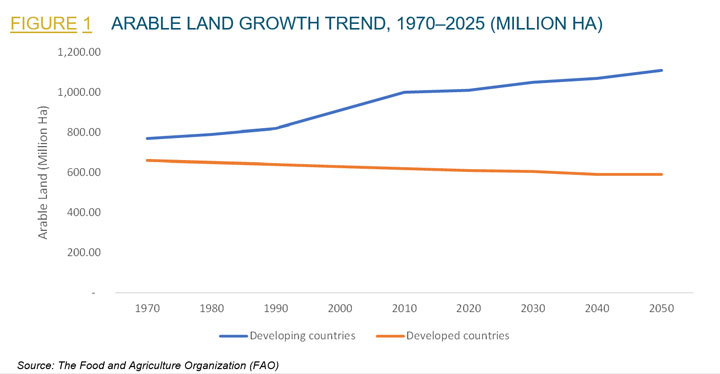The growing trend of using IoT in agricultural applications such as organic farming and family farming, where there are complex or small spaces that contain cattle and high-quality varieties of crop, is projected to drive the usage of IoT in agriculture.
 IoT in Agriculture Market
IoT in Agriculture Market

Research from | MarketsandMarkets Research Pvt. Ltd.
What is the role of IoT in Agriculture?
The global agricultural sector has witnessed several revolutionary changes, from the usage of all-purpose, rubber-tired tractors with complementary machinery in 1930, mechanical tomato harvester developed in 1959, to the rise in usage of information technology and precision techniques in the 1990s. But, the most revolutionary innovation that is expected to be an advantage for agriculture is IoT (internet of things).
Agriculture has seen numerous technological transformations over the past few decades. It has become more technologically driven, and the usage of IoT in this sector has improved nearly every facet of it. IoT has aided farmers with gaining better control over the process of raising livestock and growing crops, which is very important to accommodate with the dynamic external factors such as dietary shifts, resource constraints, climate change, and to the need to ensure the continuous supply of food to the tremendously growing population all over the world. The Food and Agriculture Organization of the United Nations (FAO) predicted that “the global population will likely reach 9.8 billion people by 2050. In order to feed the world, food production must increase by 70% by 2050.” Thus, incorporating IoT in agriculture has become the need, as it is a proven tool for preventing crop waste and enhancing crop productivity. According to the data published by World Bank in 2017, “Internet of things (IoT), big data and expert system will usher in precision farming which will lead the ‘agriculture 2.0’; and the Internet of things (IoT) will be key to agricultural production.” Moreover, gradually reducing arable land is also projected to be one of the key drivers for the growth in demand for IoT in agriculture, as it enables optimal production with the resources available, more so in developed countries.

What are its key application areas?
IoT has been mainly utilized in conventional and large farming operations so far. However, the growing trend of using IoT in agricultural applications such as organic farming and family farming, where there are complex or small spaces that contain cattle and high-quality varieties of crop, is projected to drive the usage of IoT in agriculture.
IOT applications in Agriculture
|
Application |
Description |
|
|
Precision farming |
|
|
|
||
|
Assessment of weather conditions |
|
|
|
What Makes IOT a Revolutionary Technology for Agriculture?
-
A large amount of data, collected by smart agriculture sensors can be used to track the conditions that are conducive to quality farming, such as weather conditions, soil quality, crop’s growth progress, and cattle’s health.
-
It lowers production risks, as it provides the ability to foresee the output of farm production that allows farmers to plan for better product distribution. For instance, if the farmer knows the exact volume of crops to be harvested, it can be ensured that the product will not remain unsold.
-
Increased control over production aids in cost management and waste reduction. It helps to foresee the anomalies in the crop growth or livestock health, which aids in mitigating the risks of losing crop yield.
-
Increased efficiency through process automation enables multiple processes across your production cycle, such as irrigation and fertilizing.
As a result, the farmer gets to prevent future damages and loss of crop yield, which eventually lead to higher revenue.
What are its most significant challenges?
The key challenge to IoT in agriculture lies in underdeveloped regions where there is a lack of communication network infrastructure. Farmers in this region need to be provided with incentives to buy the IoT systems as the cost of installation of this system is another challenge for the farmers.
Smallholder farmers account for four-fifths of the global agriculture production from developing regions. Being provided with the right information would aid them to increase production gains as many of them still rely on non-empirical assessment based on evidence for their farming decisions.
The content & opinions in this article are the author’s and do not necessarily represent the views of AgriTechTomorrow
Comments (0)
This post does not have any comments. Be the first to leave a comment below.
Featured Product

